How To Know For Sure If You Need A Wheat Or Gluten Free Diet
Is Going Wheat or Gluten Free Necessary?
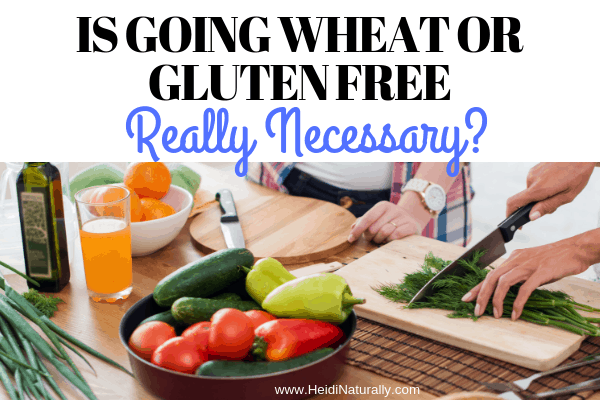
Are you allergic or intolerant to wheat or gluten? Should you start eating a wheat or gluten free diet? Let’s look at food allergies and food intolerances.
Among the most common food allergies are wheat and gluten. But how exactly do these play out in a healthy or unhealthy body?
Is an allergy the same as food intolerance? Allergies develop when the body starts to see an ingredient in food as harmful. It then prepares to defend itself against the attacker (the food).
No one really knows what happens to the immune system that makes it start to release antibodies to battle certain “harmful” foods. We need to keep our immune systems strong though!

Food intolerance starts in the digestive system. It reacts to an irritating food in various ways and is not necessarily a response of the immune system.
Somehow the digestive system starts to have trouble properly digesting or breaking down the food which creates an intolerance.
These symptoms can develop a little at a time over a long period of time. Or they develop all at once with little warning. Again, no one knows why these intolerances happen slowly or quickly. We DO know that it’s important to maintain a healthy digestive system though.
This article may contain affiliate links. You can read my full disclosure at the bottom of the page.
What’s the difference between wheat and gluten?
Many people use these terms interchangeably but it’s important to see their differences.
Gluten is a protein found in grains. Wheat is just a grain that contains gluten.
The gluten is what makes breads and pastries stretch and pull apart. That is why many gluten free products are dense. When you eat a gluten-free diet, you don’t consume any grains that contain gluten. When you eat a wheat-free diet, although you don’t eat wheat, you don’t necessarily eat a diet with no gluten.
Differences Between Intolerances and Allergies
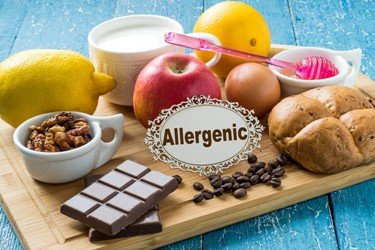
Symptoms of wheat intolerance may include stomach pain, nausea, cramps, bloating, gas, vomiting, heartburn, diarrhea, headaches, irritability, and an unexplained runny nose or itchy eyes. You might not have all of these, but even one or two symptoms could indicate a wheat intolerance.
Symptoms of wheat allergy may include itching, skin rashes or hives, nausea, stomach pain, diarrhea, joint and muscle aches and pains, shortness of breath, chest pain, sneezing, swelling of the throat, and digestive issues that can last hours or days. If you suspect a wheat allergy, it’s easy to get tested for this. That way you know what you’re dealing with and whether you need to change your diet or not.
Symptoms of gluten intolerance include weight loss or weight gain, nutritional deficiencies, bloating, pain, gas, constipation, diarrhea, aching joints, depression, eczema, headaches, fatigue, irritability and behavioral changes, cramps, tingling and numbness, and slow infant and child growth.
Symptoms of gluten allergy include upper repository tract problems, fatigue and chronic fatigue syndrome, mouth ulcers, anemia, osteoporosis, weight loss, short stature in children, diarrhea, constipation, bloating and other digestive tract problems, depression, Autism and attention problems, skin problems, and irritability.
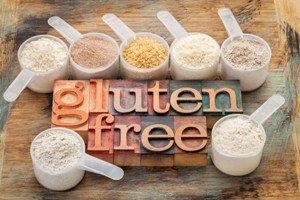
Gluten-free grains include:
- Quinoa
- Buckwheat
- Brown rice
- Jasmine rice
- Wild rice
- Coconut flour
- Almond flour
- Teff
- Amaranth
Wheat-free grains include:
- Oats
- Spelt
- Barley
- Kamut
- Millet
- Rye
- Quinoa, brown rice, and wild rice are also wheat-free.
People who are allergic to or sensitive to gluten tend to have more foods they can’t eat because many condiments contain gluten too. They need to read labels more often because ketchup, mustard, wheat-free tamari, and mayonnaise don’t contain wheat but they may contain gluten.
There are apps that you can use that scan food labels and tell you whether something is gluten-free or not.
The severity of symptoms is one difference between allergies and intolerances. Allergies get triggered when a small amount of the allergenic food is eaten.
On the other hand, food intolerances are related to the amount of food consumed. A small amount of the offending food may not cause any problems. But eating a large portion or eating the food frequently, may cause intolerance symptoms to flare.

Building a healthy immune and digestive system can help both food intolerances and food allergies from appearing in the first place. Once these issues have developed, it takes a lot of work to bring them back into balance.
What about Celiac Disease?
Celiac disease is basically a gluten intolerance, with a severe outcome. With celiac disease, the inner lining of the small intestine has an allergic reaction to the gluten that is present in wheat and other products.
This reaction causes the small intestine to become inflamed. Then it reduces the absorption of the nutrients that pass through the small intestine from food. One of the main symptoms of Celiac Disease is gastrointestinal problems. This includes bloating, gas, cramps, diarrhea and fatty stools.
Eventual signs of malnourishment will appear as a result of nutrients not being properly absorbed by the small intestine. Some people with Celiac Disease can tolerate small amounts of gluten, but others will experience severe symptoms within just a few minutes of eating an offending food.
Treatment for wheat and gluten allergy or intolerance and Celiac Disease all involve removing wheat and gluten from your diet. Avoidance of wheat, rye, barley, and oats is necessary. Foods that contain these ingredients must also be avoided. Avoid processed foods and beer, and be careful with vitamins and supplements that contain gluten as well.
Our Family Story:
One of our newly married daughters suspected that she had Celiac Disease. She started researching her symptoms that were greatly affecting her life. Her first step was to go wheat and gluten free and see what happened.
She started feeling much better after a few days and has stuck very closely to her wheat and gluten free diet. She knows that if she eats even a little bit of either that she will start to be very grumpy and have digestive issues.
You ask yourself how this happens to a young person. My theory is that, since she had just graduated from college, the stress and hectic lifestyle that she had there caused her body to develop these intolerances.

Hence the need for us to avoid stress as much as possible and make sure we are getting the right foods and the right amount of sleep each night. In college, it’s hard to do that. And depending on your major (hers was incredibly difficult and time-consuming) it’s sometimes not easy to achieve this.
Now we are a few years down the road from this and I believe that this Superfood Paradise has helped her improve her health and tolerate gluten again.
How to know for sure if you are sensitive to wheat and/or gluten
- Eliminate these from your diet for at least 3 weeks. Use this chart to track your energy levels, digestion, mood, skin, and anything else you want to track. Trying to give up something is hard, but knowing that you only have a limited time, makes it easier to get motivated. If we threw up every time gluten hit our tongue, we would be much more motivated not to eat it. Gluten intolerance symptoms happen more subtly and slowly. So we need to eliminate it for a longer period of time and keep track of how we feel to know for sure if it is affecting us.I encourage moms to do this with their kids that they suspect an intolerance. It’s hard to stick to a strict diet, but if you notice a huge difference in your child, you will be more motivated to keep it up. This works with dairy, red food dye, and other common allergies among children.
- Reintroduce gluten or wheat after this minimum of three weeks. Do you notice any symptoms appearing? Do you feel foggy or sluggish or notice any digestive issues?
- Decide what your next step should be. Should you revamp what you’re eating to keep eating gluten/wheat free? Or are you willing to live with the side effects and possible long-term health problems?
How to Build a Healthy Immune and Digestive System
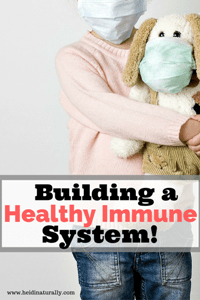
Lessen stress – Stress is everywhere in this day and age, but you will do yourself and your family a great service to eliminate it as much as possible. Are your children in too many activities? Are you in too many activities? Do you have some toxic relationships that you need to get out of?
Take a long hard look at your life and do all you can to eliminate as many stressors as possible. It’s much easier to take good care of your body and not develop these intolerances than it is to heal them once they are present.
Drink alkaline water – Our family has been drinking alkaline water for several years now. When water is your main beverage, you need to make sure that what you’re drinking is pure. Here’s the system we use for our alkaline water system and our guide for finding affordable alkaline water.
Do a Cleanse or Detox – Here is a guide to knowing which cleanse is best for your lifestyle.
Make Sure You’re Getting Plenty of Good Fruits and Vegatables – This can be really difficult to do, so that’s why I like this Superfood Paradise. Our daughter has had amazing results with this and is able to tolerate gluten again.
Protect Yourself From Eating Hidden Wheat & Gluten
Navigating the maze of foods containing gluten and wheat can be daunting if you’re intolerant or

allergic to these substances. For some, eating a bit of wheat or gluten will produce mild symptoms that are inconvenient at worst.
For others, ingesting such foods can be life-threatening. How can you be certain that the foods you’re eating are free from wheat and gluten? First, read ingredient labels when shopping. Never make assumptions.
There are many food items on the market that contain wheat or wheat gluten, but you’d never guess it from looking at them. Also, when reading labels, know what to look for. There are lots of ingredients listed that don’t have the words “wheat” or “gluten” in them.
The following is a list and brief description of ingredients to avoid:
Hydrolyzed Plant Protein or Hydrolyzed Vegetable Protein (HPP or HVP) – These are not acceptable because it doesn’t identify what the plant source is. Under new laws, the plant source must be identified, as in Hydrolyzed Corn Protein.
Modified Food Starch – There’s no requirement for identifying the plant source, but if wheat is being used, by law it needs to be labeled as Modified Wheat Starch.

Natural and/or Artificial Flavorings – Sometimes hydrolyzed protein may be used for flavoring, and sometimes barley, malt or rye derivatives are used for flavoring. It’s best to contact the manufacturer to find out if they’re adding any type of barley malt/syrup or extract to their flavoring, and what type, if any, of hydrolyzed protein is being used.
Starches – Often used as binding agents and thickeners in seasonings, in the US, starch refers to corn. If other starches are being used, they must be identified.
Dextrin – Also used as a thickener, dextrin can be made of corn, rice, tapioca, wheat or potato. If wheat is used, it should be identified as Wheat Dextrin.
Individual spices – Individual spices won’t contain gluten, but a mixture might carry wheat starch as a binding agent. It will be noted on the label.
Previously, some ingredients were viewed as suspect, but are now considered to be gluten-free.
They are:
- Maltodextrin
- Glucose Syrup
- Carmel Coloring
- Citric Acid
- Distilled Vinegars (Malt Vinegars are NOT gluten free)
When going out to eat, check the menu and ask questions if nothing is listed. You can call ahead and ask about wheat or gluten-free menu items if you’ve never been to that restaurant before. Or many well-known chain restaurants have wheat and gluten-free menu details on their website.
Since so many people are now dealing with wheat or gluten-free diets, most restaurants are aware of this and try to accommodate them.
Many fine restaurants (and even fast-food restaurants) make a point of providing this information to their customers. So make a point of reading the fine print and looking for clues on their menus as to which items are wheat or gluten free.
Wheat or Gluten Free Snacks
Sometimes wheat or gluten free options are not available especially at sporting events, so make sure you always carry snacks with you. There are lots of gluten and wheat free snack bars and other snacks available online and at health food stores.
Good Snacks to Purchase if You Are Wheat and Gluten Free:

Nut-Thins – There are many varieties of these crackers that many people really like.
Lara Bars – These are amazing! They taste great without any guilt. My favorite are the Peanut Butter Chocolate Chip variety.
There are also several good gluten-free breads available that you can buy in bulk and freeze. Then you always have bread on hand that you can eat.
You can always carry God’s natural fast foods with you like apples, oranges, almonds, peanuts, bananas, pears, mini cucumbers, tomatoes, walnuts, pecans, and more.
Or you can make your own wheat or gluten free snacks by searching websites like all-recipes.com. They have tons of recipes in all categories. You can even search for a certain ingredient and category. My favorite part of their website is the rating system. I know that if I pick a recipe that got 5 stars with lots of reviews, it will most likely taste good.
Just because you find yourself sensitive or allergic to wheat or gluten, doesn’t mean that your life is over and that you can’t have fun or eat good foods anymore.
If you think about it, our grandparents and great-grandparents probably ate this way all the time. They didn’t have all the processed foods and additives to deal with. They didn’t need to worry if a food was wheat or glutne free.
We’ve been conditioned to believe that the processed foods taste the best. But in all reality, our bodies probably function best with real foods like meat and vegetables.
Are you vegan or thinking about eliminating meat and eating more vegetables, check out the free Vegan Living for Beginners book here. Or get Vegan Diet Ideas and Vegan Living on a Budget for even more recipes and information.
When you’ve been invited to a friend’s for dinner, mention beforehand that you must eat wheat and gluten free diet. They will appreciate the heads up, but may need to be educated about what that entails.
In summary, gluten is a protein found in many processed foods and grains. It can cause serious reactions and issues for some people and seems to be more and more common among people. You can remove wheat from your diet, but it can still include gluten found in some of the grains and foods that you might eat.
Supporting your body with this Superfood Paradise can really help with gut damage.
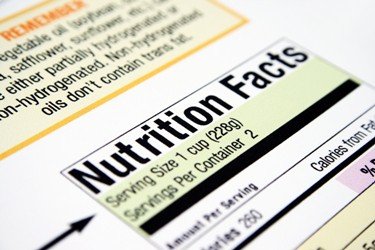



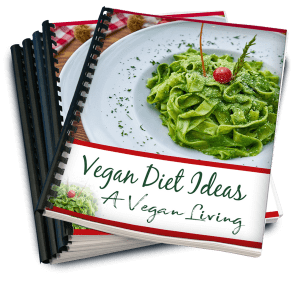



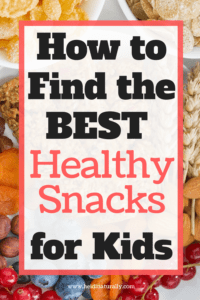
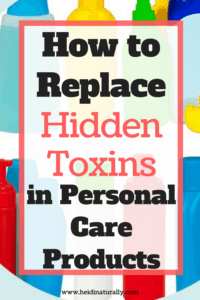

Great article, Heidi! You’ve provided a clear explanation of several aspects to this topic. I learned a lot and will share this with others because you were able to define things I’ve had trouble explaining. Thank you for the vegan links as well!